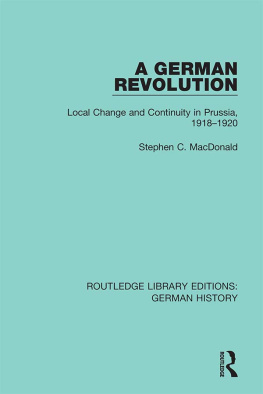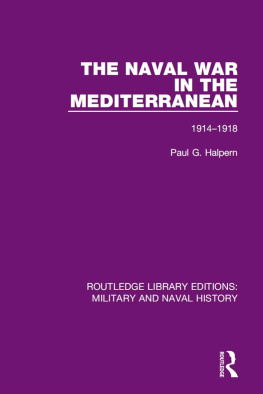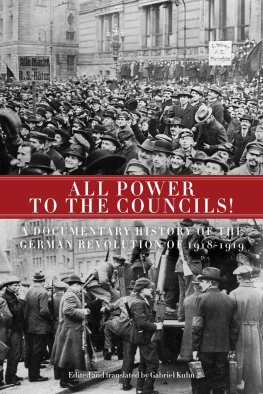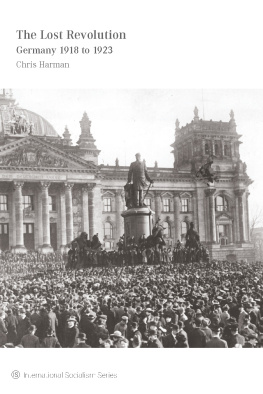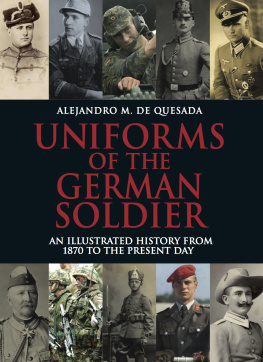ROUTLEDGE LIBRARY EDITIONS:
GERMAN HISTORY
Volume 30
A GERMAN REVOLUTION
A GERMAN REVOLUTION
Local Change and Continuity in Prussia, 19181920
STEPHEN C. MACDONALD
First published in 1991 by Garland Publishing Inc.
This edition first published in 2020
by Routledge
52 Vanderbilt Avenue, New York, NY 10017
and by Routledge
2 Park Square, Milton Park, Abingdon, Oxon OX14 4RN
Routledge is an imprint of the Taylor & Francis Group, an informa business
1991 Stephen C. MacDonald
All rights reserved. No part of this book may be reprinted or reproduced or utilised in any form or by any electronic, mechanical, or other means, now known or hereafter invented, including photocopying and recording, or in any information storage or retrieval system, without permission in writing from the publishers.
Trademark notice: Product or corporate names may be trademarks or registered trademarks, and are used only for identification and explanation without intent to infringe.
British Library Cataloguing in Publication Data
A catalogue record for this book is available from the British Library
ISBN: 978-0-367-02813-8 (Set)
ISBN: 978-0-429-27806-8 (Set) (ebk)
ISBN: 978-0-367-24706-5 (Volume 30) (hbk)
ISBN: 978-0-429-28399-4 (Volume 30) (ebk)
Publishers Note
The publisher has gone to great lengths to ensure the quality of this reprint but points out that some imperfections in the original copies may be apparent.
Disclaimer
The publisher has made every effort to trace copyright holders and would welcome correspondence from those they have been unable to trace.
A GERMAN REVOLUTION
Local Change and Continuity in Prussia, 19181920
Stephen C. MacDonald
Copyright 1991 by Stephen C. MacDonald
All Rights Reserved
Library of Congress Cataloging-in-Publication Data
MacDonald, Stephen C.
A German revolution: local change and continuity in Prussia, 19181920/Stephen C. MacDonald.
p. cm.[Modern European history]
Originally, presented as the authors thesis [Ph. D.]University of Virginia, 1977.
Includes bibliographical references [p. ].
ISBN 0-8240-2544-X [alk. paper]
1. GermanyHistoryRevolution, 1918. 2. Hassel [Germany]History. I. Series.
00248.M22 1991
943.085dc20 91-12411
Designed by Marisel Tavrez
Printed on acid-free, 250-year-life paper.
Manufactured in the United States of America
I owe thanks to many people for their assistance with this study. First to my teachers at the University of Virginia. Enno E. Kraehe imposed a rigorous discipline on me as a student in his seminar where he taught me the necessity of patient and painstaking research. H. C. Eric Midelfort opened my imagination to the realities and pleasures of social history; without the stimulation of his classes on early modern European history, I would have approached this topic of modern European history with a less-varied conceptual palette. Hans A. Schmitt, above all, guided the development of the study from its origins as a seminar paper in spring 1973. His creativity, intelligence, and buoying enthusiasm carried me over countless practical difficulties.
A generous grant from the German Academic Exchange Service permitted me to work in Germany in 197374 where I did the bulk of the research. That research was facilitated by the genial assistance of the staffs of the Hessian State Archive in Marburg and the library of the University of Marburg. The Hessian Home Settlement Co., Ltd. of Kassel provided me with information unavailable in public sources. Dickinson College has supported the preparation of the final manuscript.
I have benefited along the way from the help and friendship of others who deserve mention: Jerry Soliday, Tom and Alice Buchanan, Thomas Fox, Marlee Jones.
To two women I owe a special debt of gratitude. My mother. Marguerite A. MacDonald, has encouraged and supported my academic career all my adult life. I cannot thank her adequately here. My wife, Mary C. Warner, has given me love, comradeship, and material assistance for nearly two decades. I dedicate this work to her and to mv son, John.
Stephen C. MacDonald
Carlisle, Pennsylvania
March, 1990
TABLE OF CONTENTS
LIST OF TABLES
LIST OF ILLUSTRATIONS
Figure
In the thirty-five years since Karl Dietrich Erdmann noted that serious study of the history of the Weimar Republic had hardly begun, the trickle of literature on the period 19181933 swelled to a flood. The waters recently show some signs of receding; they leave behind a richly-irrigated terrain. Students of German history may avail themselves today of a wealth of monographs, biographies, and documentary collections detailing the collapse of the Wilhelmian Reich and the tumultuous beginnings of the first German republic.
The German Revolution of 1918, once widely-ignored, often despised, and half-forgotten, has emerged as a central motif of recent German historiography. We now know a good deal about the government of Prince Max, the workers and soldiers councils, the council of peoples commissars, the motives and goals of the leading personalities, the disposition and strength of the contending political constellations, the role of the masses, the unions, the revolutionary shop stewards, the army, the churches, the state bureaucracy. Studies of the revolution have not been limited to events at the center of the stormKiel, Berlin, Munichbut increasingly have looked as well at the no less interesting periphery. These regional studies have enriched and in some cases substantially modified our interpretation of Weimars birth.
Karl Dietrich Erdmann, Die Geschichte der Weimarer Republik als Problem der Wissenschaft, Vierteljahrshefte fr Zeitgeschichte , III, no. 1 (January 1955), pp. 119.
Gerhard P. Bassler, The Communist Movement in the German Revolution, 19181919: A Problem of Historical Typology? Central European History , vol. 6, no. 3 (September 1973), p. 240.
The enormous strides taken in the course of the past three and one-half decades of historical investigation have failed in one respect: they have not liberated the German Revolution from the spectre of the republics bizarre successor. A terrible presentiment of Adolf Hitler continues to lurk amidst the pages of Weimars history. The numbing inevitability (in retrospect) of the National Socialist episode has made it exceedingly difficult to see the period 19181933 on its own terms rather than as prelude to the Third Reich.
Perhaps it cannot be otherwise. For historians of modern Germany, Hitler remains the central problem. This is all the more true for German historians living in the Federal Republic. They are obliged to ask where the first German republic went wrong if they are to feel secure in the second. For them Weimar must remain under suspicion (in Michael Strmers words) so long as the causes of the German catastrophe of 19331945 remain open.
With Weimar one begins at the beginning. It was in the revolutionary moment itself, the months from November 1918 to January 1919 when (all are agreed) fundamental decisions about the new republic were fashioned. In 1955 Karl Dietrich Erdmann offered a succinct description of that moment. There was no real revolution, certainly no social revolution in Germany in 1918, he said, but only a military defeat and a consequent evaporation of the political will of the old order. The leaders of the new interim regime, said Erdmann, were confronted at once with a stark choice: social revolution in alliance with forces pressing for a dictatorship of the proletariat or a parliamentary republic in alliance with conservative elements like the old officer corps. That the Social Democrats, faced with this choice, should have opted for a parliamentary republic was for Erdmannliberal democrat and supporter of the newly-established parliamentary regime in Bonnthe correct course of action.

